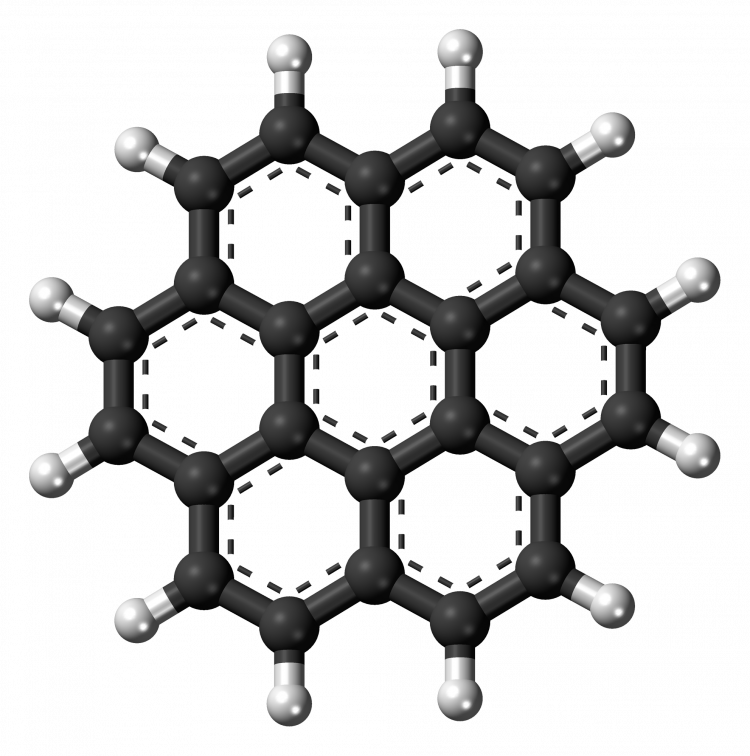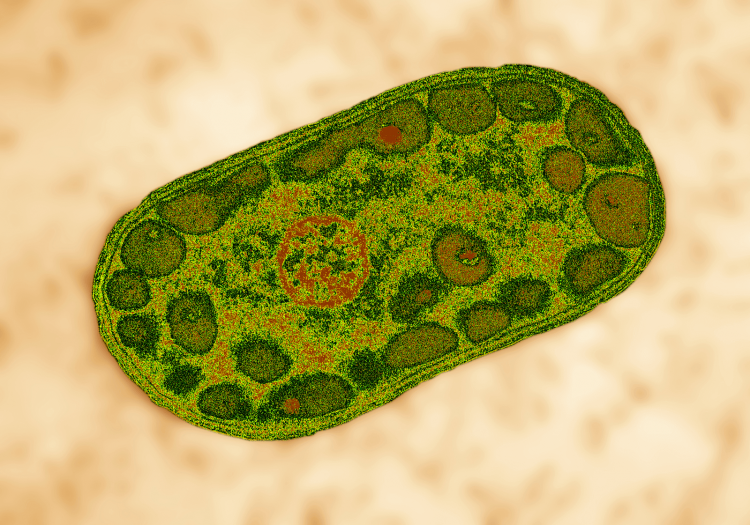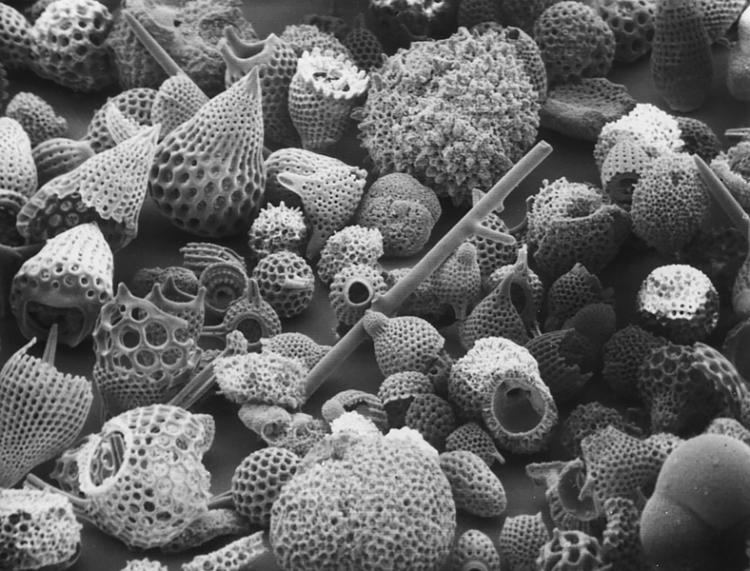In the summer of 2012, geochemist Jessica Whiteside was waiting for the delivery of a precious sample through an unusual route: a 22-foot-wide hole in the bottom of a ship floating in the northwest Atlantic. Three miles below, a drill bit the diameter of a dinner plate was churning into the ocean floor, capturing a column of ancient mud and rock. Each 30-foot-long tube of sediments that the ship’s crew hauled from the deep held clues to the planet’s past. Most would emerge after sophisticated tests. But on this voyage a quick eyeball was enough to spot the signs of one drastic — and deadly — event: the mass extinction that killed the dinosaurs.
The history of life has been punctuated by mass extinctions — the biggest five are depicted in the above image, adapted from a review published by Whiteside and Kliti Grice of Western Australia’s Curtin University in the Annual Review of Earth and Planetary Sciences. The cataclysms leave their ancient traces in the rocks. In core samples that date beyond 65 million years, for example, the extinction that wiped out the dinosaurs (at least the non-avian dinos) is “very specific looking,” says Whiteside, now at the University of Southampton in the UK. A grayish sediment rich with the chalky remains of shelled life is interrupted by a thin dark band that owes its tint to extraterrestrial material brought in by an asteroid impact. The tint then gives way to a thick brownish-orange stripe that signals the death knell of the dinosaurs and most of their contemporaries in the most famous mass extinction of all.
The sediment cores also hide invisible molecular fossils: chemical remnants of membranes, DNA, proteins and other biological structures from ancient organisms. Based on these and other evidence, Whiteside and Grice highlight eight major factors that can work together to destabilize ecosystems and the life that they support. From killer volcanoes to less visible changes in air and temperature, here’s a rundown of key executioners throughout the planet’s history and some of the ways they’re recorded in the Earth.
Possible triggers
Massive volcanic eruptions from shifting tectonic plates likely tipped the first domino in at least two of the five extinctions above. Far from the relatively contained lava flows you might see in Hawaii, this volcanism in some cases saw gas and molten rock spouting from millions of kilometers of the Earth’s surface for tens to hundreds of thousands of years. These outpourings left behind volcanic rock — a clue the size of Western Europe in the case of the Siberian Traps, associated with the end-Permian extinction. The end-Triassic event similarly occurred after massive and long-term volcanic activity, leaving a clear record behind in the rock layers. But these events also left behind subtler clues such as microscopic compounds that signal the combustion of coal, forests or other organic materials burned by lava. These polycyclic aromatic compounds have been found in ash sourced to the Siberian Traps and have been used to argue for periods of global wildfire that may have been set ablaze, in part, by volcanism.

Fossils come in all shapes and sizes; mere molecules can give scientists a picture of the past. High concentrations of coronene (chemical structure shown), and members of its family, tell scientists when parts of the planet were burning.
CREDIT: JYNTO/WIKIMEDIA COMMONS
Limited access to well-preserved geological records has left the events of the two earliest major extinctions hazy, says Michael Rampino, a geologist at New York University. But Whiteside and Grice highlight a possible driver for each: glaciation during the end of the Ordovician period, and the rise of rooted plants, which altered the carbon cycle, for the Late Devonian extinction.
Similarly, the cause of the extinction that wiped out the dinosaurs remains disputed. While some scientists favor the impact of an asteroid, others such as Princeton paleontologist Gerta Keller argue that though an asteroid did strike, volcanism was the main culprit. Some think the two factors combined to drive life to the edge.
Carbon dioxide levels
Every major mass extinction has been accompanied by a rise or fall in atmospheric carbon dioxide, something scientists can track by examining fossilized phytoplankton, gas bubbles trapped in ancient layers of ice, and microstructures on fossilized leaves called stomata — tinyinhalation pores that tend to drop in width and density with increased CO2 availability. The ability of CO2 to acidify the oceans and trap heat from the sun has made it a major force for change throughout Earth’s history. When these shifts happen too quickly, ecosystems cannot adapt, and life begins to collapse.
Temperature shifts
Changing chemistry in ice cores and the remains of species where they’re not expected reveal how temperatures have fluctuated wildly over Earth’s history. The fossils of tiny marine critters, whose calcium carbonate shells capture varying forms, or isotopes, of oxygen depending on the temperature, provide additional evidence. Warming played a hand in the end-Permian extinction, via excessive outpouring of CO2 from volcanic eruptions. And the rise of plant life on land, which pulled CO2 out of the atmosphere, may have driven the cooling that accompanied the earlier late-Devonian extinction — “one example where life changes the landscape,” says Whiteside. Wide temperature swings can squeeze species into smaller and smaller habitats as they search for survivable climates.
Ocean acidification
With a rise in atmospheric CO2, more of the gas dissolves into the oceans, where it is converted into carbonic acid. This drives up levels of marine acidity. Of the factors listed above, this is the most difficult to reconstruct from records of the past, says Whiteside. Estimates come from a loss of certain indicator species such as corals and shelled marine life, which struggle to form calcium carbonate structures in acidic waters. Ocean acidification during the end-Devonian extinction likely contributed to a near annihilation of the expansive coral reef systems that covered much of the planet at the time.
Oxygen levels
Life in the oceans also struggles when oxygen drops, a factor that has been identified in all the mass extinctions. During the end-Permian event, an expansion of low-oxygen zones accompanied the disappearance of more than 90 percent of marine life. To study the link, Rampino and his colleagues search for what scientists call disaster species. These life forms thrive on the very conditions, such as low oxygen, that take down most other life.

Disaster species, such as this digitally colored green sulfur bacterium, thrive in extreme conditions where most other life can't exist. When green sulfur bacteria are on the rise, it can signal the downfall of many other species.
CREDIT: DR. TERRY BEVERIDGE/VISUALS UNLIMITED, INC.
Recently, this search found Rampino at a roadcut in China, where construction has exposed well-preserved layers from the event 250 million years ago. In samples from that outcrop, he and his colleagues will look for biomarkers such as isorenieratene, a pigment used by oxygen-hating green sulfur bacteria to harvest trace amounts of light energy from geothermal vents. The extreme conditions around vents are ideal for green sulfur bacteria, but not much else. A spread of isorenieratene to new parts of the geologic record is a signal that extreme conditions were on the rise — including the loss of oxygen. The green sulfur bacteria “were quite happy, but nothing else was,” Rampino says. “The conditions were killing off all other forms of life.”
Nutrient budgets
Availability of critical nutrients like nitrogen and phosphorus — both ingredients of DNA and other components of life — also influences which forms of life survive an extinction event. Delicate nutrient cycles can be thrown off by both large drops and large increases in nutrient availability. Scientists attempt to measure whether nutrient levels were the same before and after extinction events. During the end-Triassic extinction, for example, there’s evidence of a huge bloom of single-celled algae called prasinophytes, suggesting a drop in the form of nitrogen most life needs to survive.
Marine productivity
In a thriving ocean, tiny organisms are hard at work, taking in energy from the sun to transform CO2 into carbon-rich sugars, fixing nitrogen, exhaling oxygen and, through these activities, forming the foundation of the marine food web. Living things prefer to use some isotopes of carbon over others and scientists can use this tendency to help model the history of life’s productivity. When marine activity is booming, more of life’s preferred carbon isotope is locked up in it. But when productivity drops (or when organic stores like coal are burned), it changes the ratio of carbon isotopes left behind. The disappearance of more and more marine species along with the loss of certain forms of chlorophyll from the fossil record serve as additional signals that past oceans got pretty quiet. And the effects didn’t stop at the shoreline.

The earth beneath us is rich with footprints of the past — even though these traces often can’t be seen. These 45-million-year-old fossilized skeletons from beneath the ocean were revealed only with the help of a powerful microscope.
CREDIT: SPECIAL COLLECTIONS & ARCHIVES, UC SAN DIEGO.
“If marine productivity goes down,” says Whiteside, “it basically means the whole state of primary production goes down.”
Ecosystem recovery
Though mass extinction events sound apocalyptic, some forms of life survived each one. A creeping rise in the overall diversity and complexity of species in the fossil record pinpoints when ecosystems of the past began to recover. But these recoveries can take a very long time. While the dinosaurs were wiped out in only tens of thousands of years — a blip in terms of geological time scales — it was millions of years before species diversity bounced back.
A sixth extinction?
For Whiteside, a key reason to study Earth’s geologic history is for insights into the potential impacts of the human-driven environmental changes occurring now. Today, the levels of heat-trapping CO2 and other greenhouse gases in the atmosphere are spiking, with global average temperatures rising in step. But instead of volcanoes spewing these compounds from the Earth, humans are in the driver’s seat, burning through many of the same substances faster than at any point since the dinosaurs went extinct. And low-oxygen, low-nutrient regions dubbed ocean dead zones are on the rise once again, quadrupling since the 1950s, according to a recent publication in Science. This spreading threat to ocean life is confounded by ocean acidity, which has seen about a 25 percent increase in the last two centuries. Fragments of the past, says Whiteside, give scientists the best shot at predicting what these changes mean for the future of today’s life and whether — as some experts have proposed — that future might include a sixth mass extinction.
“The only way we can know what the ramifications are,” she says, “is to use our natural tape recorders of the past.”




